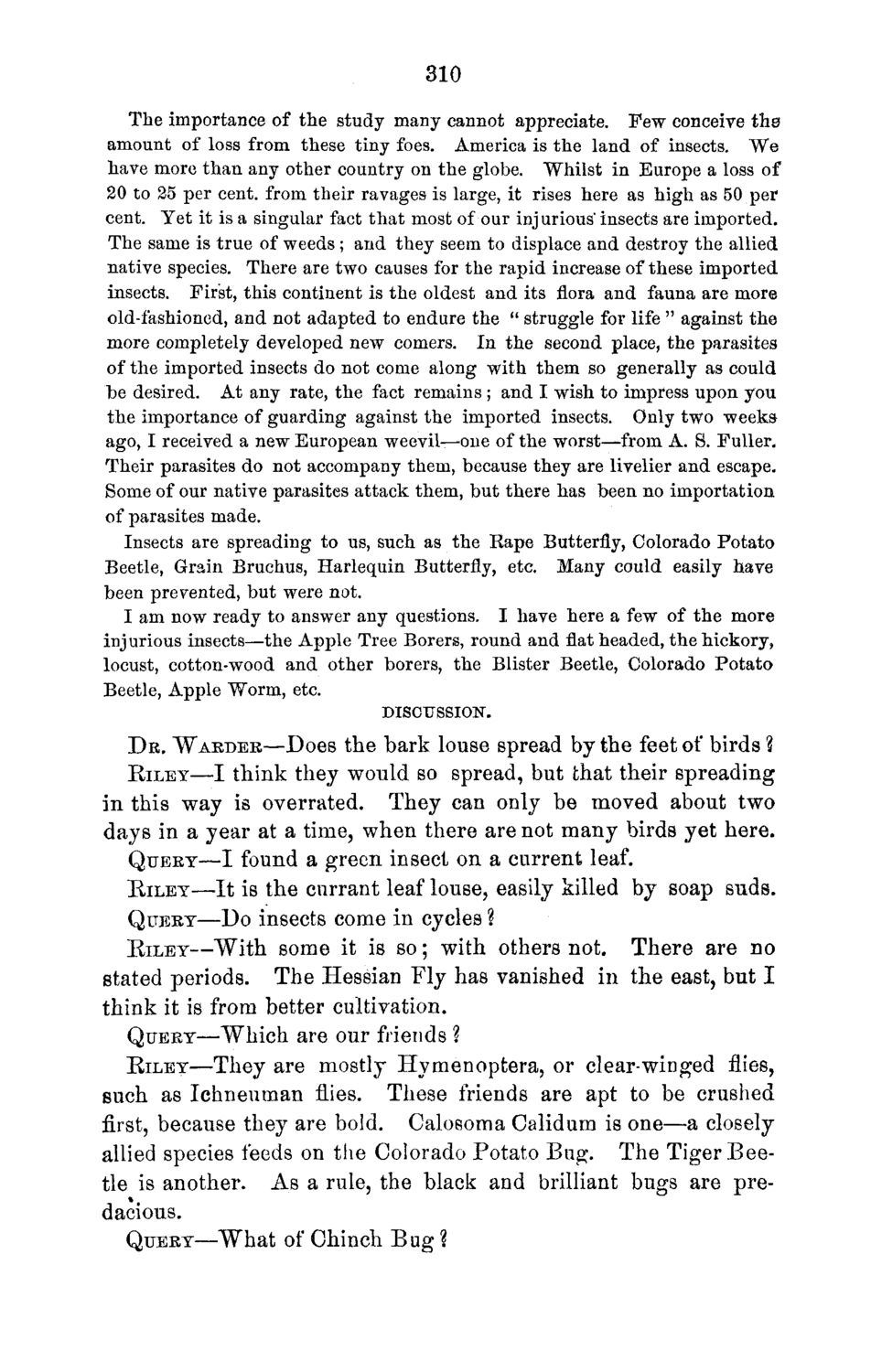| |
| |
Caption: Board of Trustees Minutes - 1870
This is a reduced-resolution page image for fast online browsing.

EXTRACTED TEXT FROM PAGE:
310 The importance of the study many cannot appreciate. Few conceive the amount of loss from these tiny foes. America is the land of insects. We have more than any other country on the globe. Whilst in Europe a loss of 20 to 25 per cent, from their ravages is large, it rises here as high as 50 per cent. Yet it is a singular fact that most of our inj urious" insects are imported. The same is true of weeds; and they seem to displace and destroy the allied native species. There are two causes for the rapid increase of these imported insects. First, this continent is the oldest and its flora and fauna are more old-fashioned, and not adapted to endure the " struggle for life " against the more completely developed new comers. In the second place, the parasites of the imported insects do not come along with them so generally as could be desired. At any rate, the fact remains ; and I wish to impress upon you the importance of guarding against the imported insects. Only two weeks ago, I received a new European weevil—one of the worst—from A. S. Fuller. Their parasites do not accompany them, because they are livelier and escape. Some of our native parasites attack them, but there has been no importation of parasites made. Insects are spreading to us, such as the Kape Butterfly, Colorado Potato Beetle, Grain Bruchus, Harlequin Butterfly, etc. Many could easily have been prevented, but were not. I am now ready to answer any questions. I have here a few of the more injurious insects—the Apple Tree Borers, round and flat headed, the hickory, locust, cotton-wood and other borers, the Blister Beetle, Colorado Potato Beetle, Apple Worm, etc. DISCUSSION. D R . WARDER—Does the bark louse spread by the feet of birds 2 K I L E Y — I think they would so spread, but that their spreading in this way is overrated. They can only be moved about two days in a year at a time, when there are not many birds yet here. Q U E R Y — I found a green insect on a current leaf. B I L E Y — I t is the currant leaf louse, easily killed by soap suds. QUERY—Do insects come in cycles ? RILEY—With some it is so; with others not. There are no stated periods. The Hessian Fly has vanished in the east, but I think it is from better cultivation. QUERY—Which are our friends ? KILEY—They are mostly Hymenoptera, or clear-winged flies, such as Ichneuman flies. These friends are apt to be crushed first, because they are bold. Calosoma Calidum is one—a closely allied species feeds on the Colorado Potato Bug. The Tiger Beetle is another. As a rule, the black and brilliant bugs are predacious. QUERY—What of Chinch Bug ?
| |